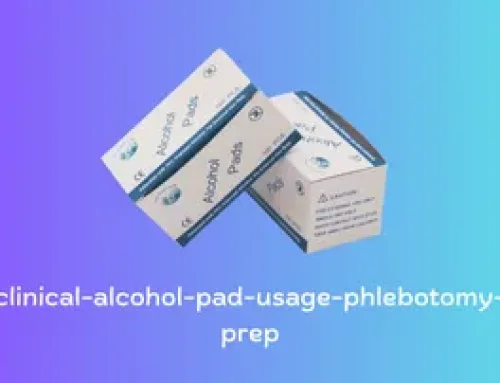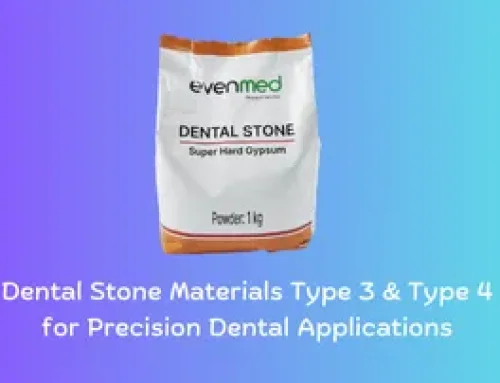Dental impressions play a crucial role in dentistry, aiding in accurate diagnosis, treatment planning, and the creation of dental restorations. Among the wide range of dental impression materials available, alginate stands out as a popular choice due to its versatility and ease of use. In this comprehensive guide, we will delve into the types, applications, and benefits of dental impression materials, with a special focus on alginate. Join us as we explore the world of dental impressions and how alginate revolutionizes this essential aspect of dentistry.
Types of Dental Impression Materials:
- Alginate: Alginate is a widely used dental impression material known for its affordability and simplicity. Derived from seaweed, alginate powder is mixed with water to create a viscous paste that quickly sets, capturing precise impressions of the oral cavity.
- Silicone: Silicone impression materials offer excellent dimensional stability and detail reproduction. They are available in two types: condensation-cured silicones and addition-cured silicones. Both offer different properties and applications depending on the specific requirements of the case.
- Polyether: Polyether impression materials provide high accuracy and dimensional stability. They have excellent tear resistance and are often used in challenging clinical situations.
- Vinyl Polysiloxane (VPS): VPS materials combine the best characteristics of silicone and polyether impression materials. They offer excellent detail reproduction, dimensional stability, and tear resistance. VPS materials are available in various viscosities, making them suitable for a wide range of impression techniques.
Applications of Dental Impression Materials:
- Crown and Bridge Impressions: Dental impressions are used to create accurate replicas of the teeth and surrounding tissues for the fabrication of crowns, bridges, and other fixed restorations. Alginate and silicone materials are commonly used for crown and bridge impressions due to their ease of use and accuracy.
- Removable Prosthodontics: Dental impressions are essential for the creation of removable partial dentures, complete dentures, and implant-supported overdentures. Polyether and VPS materials are frequently employed for these applications, as they offer excellent detail reproduction and dimensional stability.
- Orthodontics: In orthodontics, impressions are taken to create study models, fabricate orthodontic appliances, and plan treatment. Alginate is often used for preliminary impressions, while silicone or polyether materials are preferred for more precise orthodontic impressions.
- Dental Implantology: Accurate impressions are crucial for the successful placement of dental implants. Silicone or polyether materials are commonly used in implant dentistry due to their dimensional stability and ability to capture fine details.
Conclusion:
Dental impression materials play a vital role in modern dentistry, enabling dentists to capture accurate and detailed impressions of the oral cavity. Among the various options available, alginate stands out as a versatile and cost-effective choice, making it a popular material for many dental impressions. Understanding the different types of dental impression materials and their applications can help dentists make informed decisions for their specific cases.
When purchasing alginate powder, it is crucial to choose a reputable supplier that offers high-quality materials. Additionally, mastering the water-powder ratio is essential to achieve precise results with alginate impressions.
In summary, dental impression materials are integral to the practice of dentistry, and alginate emerges as a reliable and widely used option. Its natural composition derived from seaweed, combined with its ease of use and affordability, makes alginate a popular choice among dental professionals.
When considering the composition of alginate, it primarily consists of sodium alginate, calcium sulfate, and other trace elements. Sodium alginate, a natural polysaccharide extracted from brown seaweed, serves as the main component responsible for alginate’s gel-forming properties. Calcium sulfate acts as a setting agent, initiating the gelation process when mixed with water.
To achieve optimal results with alginate impressions, it is crucial to understand the water-powder ratio. The water-powder ratio determines the consistency and setting time of the alginate mixture. It is recommended to follow the manufacturer’s instructions and guidelines to ensure accurate measurements and a proper mix. Adjusting the water-powder ratio can help control the working and setting time, allowing for adjustments according to the specific clinical needs.
In the dental office, alginate impressions find widespread applications. One of the primary uses is for crown and bridge impressions. Alginate’s ability to capture detailed impressions quickly makes it a preferred choice for preliminary impressions in crown and bridge procedures. These impressions provide a foundation for the creation of precise dental restorations.
Furthermore, alginate is commonly utilized in removable prosthodontics. It enables the creation of accurate impressions for the fabrication of removable partial dentures, complete dentures, and implant-supported overdentures. The ease of use and cost-effectiveness of alginate make it a valuable tool in removable prosthodontics.
Orthodontics also benefits from alginate impressions, especially for preliminary or study models. Alginate allows for quick and efficient impressions, aiding in the assessment of occlusion, tooth position, and treatment planning. This information is crucial in designing orthodontic appliances and planning orthodontic treatment.
Dental implantology relies on precise impressions for the successful placement of dental implants. Alginate impressions serve as a diagnostic tool, helping dentists evaluate the available bone structure and plan implant placement accurately. While alginate may be suitable for initial implant impressions, more advanced materials such as silicone or polyether are often used for final implant impressions to ensure optimal accuracy.
In conclusion, alginate is a versatile and widely used dental impression material. Its natural composition, ease of use, and affordability make it a popular choice for a variety of dental applications. Whether used in crown and bridge procedures, removable prosthodontics, orthodontics, or dental implantology, alginate offers dental professionals a reliable tool for capturing accurate impressions. By understanding the composition of alginate and mastering the water-powder ratio, dentists can ensure optimal results and patient satisfaction in their dental practice.





